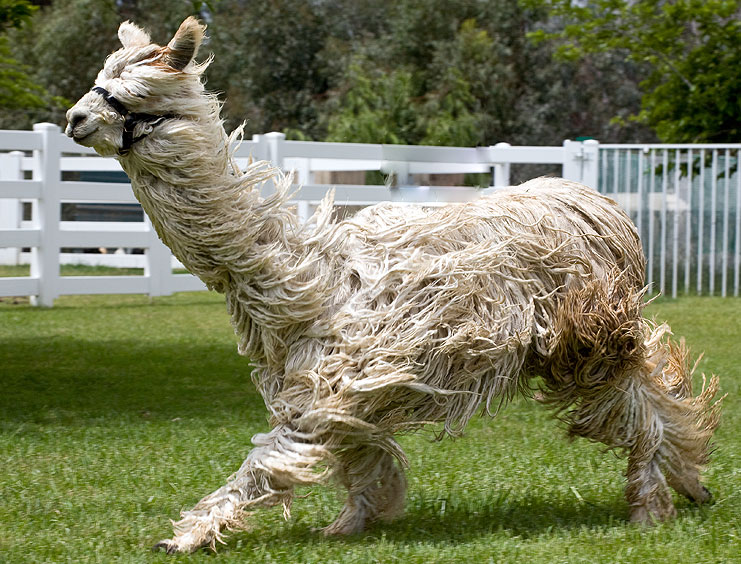Alpacas in the USA
 Alpacas were first imported into the U.S. to Ohio in 1984
Alpacas were first imported into the U.S. to Ohio in 1984
Importations continued for 15 years. All good quality animals are DNA registered. The U.S. Registry is now closed, and there are no more alpacas coming into this country from South America.
Currently, our entire national herd is approximately 150,000 alpacas. (There are 120,000 dairy cows in one medium-sized Ohio County!) The industry’s emphasis is still on producing breeding stock from the best bloodlines, and planning the future of fiber.
Australia, Canada, Great Britain, France, Italy, Israel, Japan, etc., have been developing national herds. Australia has been producing sheep wool for centuries, but is now looking to alpaca to win back the market that Merino wool has lost to synthetics. Australia began importing alpacas two years after the United States. Today, per capita, for North America to catch up with the number of alpacas per Aussie citizen, the U.S. needs 500,000 animals.
Alpacas have no horns, hooves, claws, or upper teeth. They can only run away if attacked, so alpacas are shy, and make friends slowly. They can do very little to hurt anyone, and seem to like children the best—as small creatures who aren’t very scary or threatening.

Quick Alpaca Facts:
AVERAGE LIFESPAN:
10-25 years
AVERAGE HEIGHT:
36” at the top of the shoulder
AVERAGE WEIGHT:
100-175 pounds
AVERAGE GESTATION:
335 days, or 11 months
BIRTHING:
• Normally occurs in the
daylight morning hours.
• Babies usually stand and nurse within 30 minutes to
one hour.
• Infant mortality is very low. Twins are extremely rare.
Two Types of Alpacas
Yes, there are boys and girls…
but also SURI and HUACAYA.
The animals are exactly alike, except for their style, or type, of fleece.
HUACAYA: (Wahk-eye-yah)
Wooly and crimpy
Huacaya is usually preferred by handspinners because of its crimp,
or tiny kinks, that gives it elasticity, “memory,” and makes it easier to handle. Think of “Wooly Huacaya”
SURI: (Sir-ee)
Silky long locks
Quality Suri fiber is extremely lustrous and fine. It is best for machine processing and fine fabrics. It is the closest fiber to silk that is produced by a mammal. Cut Suri fiber can mimic mink and other fur. Think of “Silky Suri”
Even the lower grades of fiber have uses for carpets, insulation, and bird’s nests!
Recent studies have shown that alpaca fiber has amazing resistance to fire. New vistas are opening up every day. Alpaca fiber has much unexplored potential.